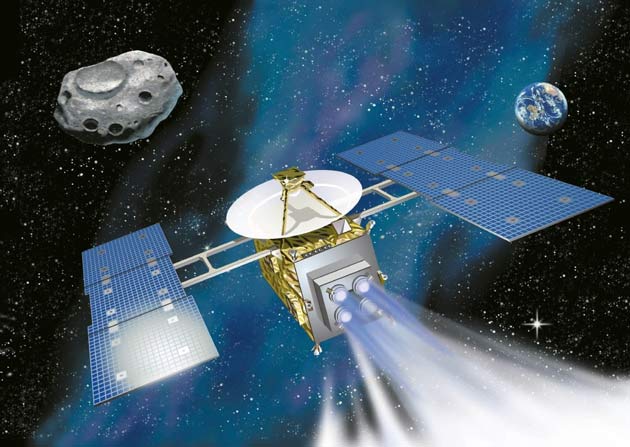Japan's Asteroid Sample-Return Mission Has Problems

PARIS --Japan's Hayabusa asteroid sample-return spacecraft has lost the use of a secondreaction wheel, forcing increased reliance on its chemical-propellant thrustersfor attitude control and raising questions about whether it can make itsplanned asteroid touchdown in November, Japan's Institute of Space andAstronautical Science (ISAS) announced Oct. 4.
Hayabusa,known as MUSES-C before its May 2003 launch, remains in a stable position 6.8kilometers from its target, the Itokawa asteroid, now 305.9 million kilometersfrom Earth. Using two reaction control systems with the remaining reactionwheel, the probe is scheduled to continue scouting possible landing sites onItokawa in the coming weeks.
ISAS saidpart of the mission -- to take high-resolution pictures of the asteroid -- almostis completed. The mission also has validated the performance of the on-boardoptical navigation camera, according to ISAS.
Hayabusaground controllers must now alter their mission profile to conserve fuel burnedby the unanticipated use of the reaction control system. The first reactionwheel failed in July. The most recent failure occurred late Oct. 2 JapanStandard Time.
If theoriginal mission scenario is maintained, Hayabusa in November will perform whatISAS calls "touch and go" maneuvers -- briefly landing on the asteroid, scoopingup small samples and then taking off -- before beginning its return voyage toEarth, with the samples, in December. Its arrival is scheduled for June 2007.
Breaking space news, the latest updates on rocket launches, skywatching events and more!

Charles Q. Choi is a contributing writer for Space.com and Live Science. He covers all things human origins and astronomy as well as physics, animals and general science topics. Charles has a Master of Arts degree from the University of Missouri-Columbia, School of Journalism and a Bachelor of Arts degree from the University of South Florida. Charles has visited every continent on Earth, drinking rancid yak butter tea in Lhasa, snorkeling with sea lions in the Galapagos and even climbing an iceberg in Antarctica. Visit him at http://www.sciwriter.us
